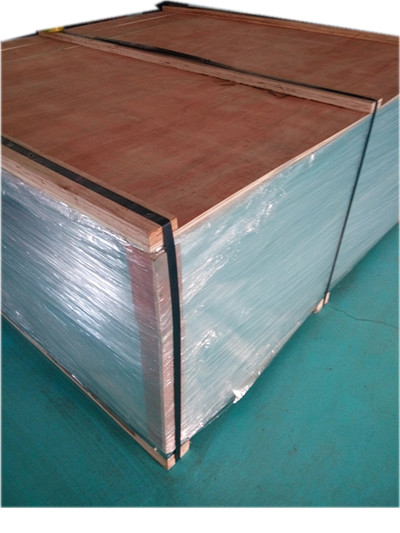Through "DNA detection" to achieve the non-destructive screening of mahogany, the "credit" label for Dayong mahogany furniture; 3D printing technology into the lighting industry, to achieve a morning sample, a new mode of picking up at night; enterprises "hand in hand" universities, research and development institutions, to achieve From the source of the drug to the standard full chain research... With the establishment of several collaborative innovation centers, the innovative research and development activities of enterprises and industries in Zhongshan have quietly changed. This year, Zhongshan set up a special fund of 20 million yuan for synergy and innovation to stimulate the space for technological innovation. The reporter learned from the Municipal Science and Technology Bureau that 16 collaborative innovation centers have been identified in the near future. Through the complementary advantages of enterprises, universities and scientific research institutions, the technical research in the specific field is different from the “production, study and research†model, and ultimately serves the enterprise. Continuous innovation and research and development activities to accelerate the change of the industry's traditional model. Redwood "DNA detection" achieves non-destructive authenticity With the increasing scarcity of redwood resources and the increasing value-added space, mahogany products are gradually becoming a new field of consumer investment and purchase. However, the industry market is mixed, and many consumers are discouraged from the redwoods, which also brings some troubles to the development of the mahogany industry in Dayong Town. "Product quality problems and lack of quality and integrity are the core issues that the mahogany furniture industry needs to solve urgently." Huang Minghua, general manager of the Zhongshan University's Zhongguang Testing Collaborative Innovation Center, a subsidiary of the Guangdong Academy of Sciences, analyzed that there are many reasons for the problem, but it is very important. One is that the current mahogany standard system and testing technology still have certain defects, which lag behind the development of the mahogany industry. In response to this situation, the government of Dayong proposed the will to build a collaborative innovation center for the mahogany furniture industry in Zhongshan City. “At the time, we worked with another organization to win this project. Since we had established a textile and garment laboratory in cooperation with Da Yong, after two years of research and development, the construction of the laboratory and the results of the investment were satisfactory to the government, so we successfully won this Project." Huang Minghua said. Subsequently, the China-Guangzhou Testing Collaborative Innovation Center, together with the Guangdong Institute of Testing and Analysis, South China Agricultural University and the Dayong Town Productivity Promotion Center, jointly built the Zhongshan Redwood Furniture Industry Collaborative Innovation Center to carry out research on redwood innovation testing technology, quality testing, talent training, etc. And has conducted more than 200 sets of rosewood testing for the Dahong Redwood Enterprise. In the past, the identification technology of mahogany at home and abroad was mainly the morphological identification method, that is, the identification of wood was realized by observing the microscopic structure of the cross section, the diameter section and the string section of the mahogany. This method is not only easy to cause damage to mahogany furniture, but also has high requirements for the appraisers, and it is easy to cause the identification results to be inaccurate. “We use chemical solvents to extract effective chemical components from 0.1 gram samples for analysis, which is somewhat close to human DNA detection and will not damage the appearance of the furniture.†Huang Minghua believes that compared to the traditional mahogany detection method, Zhongshan Redwood Furniture Industry The new research technology of the Collaborative Innovation Center is much simpler in detecting redwood, and the accuracy is greatly improved. Introducing core technology to change production mode The locks of Xiaolan, the lighting of the ancient town, the mahogany of Dayong... Zhongshan has started from a professional town and has 18 provincial-level professional towns. It is one of the three prefecture-level cities in the province that basically realize “professional townshipâ€. However, with the gradual loss of traditional advantages, Zhongshan professional towns entered a period of collective transformation, and the demand for innovation has intensified. The ancient town, which is known as the "lights", has been seeking ways to transform and upgrade the lighting industry. Through the network, it has learned about the 3D printing trading platform of Jinyun Laser, and the two sides hit it off. Immediately, relying on the Cultural Creative Design and Research Center of Wuhan University, Guzhen established the Zhongshan City Lighting Design and Industrial Application Collaborative Innovation Center to serve the design and manufacture of the lighting industry in the town. In the manufacture of lighting, the project transformed the traditional “manuscript-opening-proofing-manufacturing†design and production process into a fully digital “three-dimensional design—digital modeling—3D printing rapid prototyping—manufacturing†modern design manufacturing process. . In the development of lighting, the traditional mold opening time takes 15 days to a month. If the lighting is not ideal, it needs to be re-opened. The use of 3D printed lighting products is not only very efficient, but the material cost can be reduced by 50%-80%. “More importantly, the customer will set the lighting design model in the morning and send the lighting products to their hands before work. 3D printing is expected to change the production and consumption patterns of the industry and further increase the industrial competitiveness of Guzhen Lighting.†Collaborative Innovation Zhang Zunlong, the person in charge of the operation of the center, revealed that the center is currently negotiating with Guzhen Huayi Group. If it is successful, it will be listed next year. It is expected that the “90s†and “00s†will become the main consumers of this technology product. Including the Zhongshan Redwood Furniture Industry Collaborative Innovation Center and the Zhongshan City Lighting Design and Industrial Application Collaborative Innovation Center, 16 collaborative innovation centers have been identified in Zhongshan City this year. The so-called collaborative innovation center refers to independent legal entities such as enterprises, universities, research institutes, service organizations and industry organizations, and integrates complementary resources around the key areas of key economic and social innovation and development of Zhongshan City, key core technologies or industrial common needs. An innovative organization that cooperates with multi-participation and multi-resource integration. In addition to the Zhongshan Redwood Furniture Industry Collaborative Innovation Center and the Zhongshan City Lighting Design and Industrial Application Collaborative Innovation Center, nine service-oriented collaborative innovation centers for characteristic and advantageous industry innovations, Zhongshan also identified two research and development types for strategic emerging industries. Collaborative Innovation Center and 5 Enterprise Collaborative Innovation Centers for the core of the industry. Multi-institutional advantage integration specializes in "one finger" The Zhongshan Collaboration Innovation Center for Chinese Medicine, which was identified this time, is in fact a closer “collaboration†relationship between Zhongzhi Pharmaceutical and the two R&D institutions based on the original cooperation. It is an “upgrade†of cooperation in the past. “Injury to its ten fingers is worse than one finger. Compared with the past model of “production, study and researchâ€, the collaborative innovation center is more targeted and a long-term cumulative process.†According to Cheng Jinle, deputy general manager and chief engineer of Zhongzhi Pharmaceutical Group In the past, in the "production, study and research", the focus was different. The cultivation of talents in colleges and universities is an important content, and the fields involved are extensive and fragmented, as long as they are compatible with the development of enterprises. However, the Collaborative Innovation Center is more inclined to integrate the advantages and resources of multiple institutions, focusing on the joint research of technology in a specific field and project. This kind of "one finger" approach will help companies in the core areas of research and development. In the cooperation between Zhongzhi Pharmaceutical and the Center for Traditional Chinese Medicine Resource Science and Engineering Research of Guangzhou University of Traditional Chinese Medicine (Key Laboratory of Lingnan Traditional Chinese Medicine Resources Ministry of Education) and Shanghai Institute of Materia Medica, Chinese Academy of Sciences, the core technology of Chinese medicine breaking core controlled by Zhongzhi Pharmaceutical has been carried out. The strength of product development; Guangzhou University of Traditional Chinese Medicine Research Center has the research and support advantages of traditional Chinese medicine resources; Shanghai Institute of Materia Medica, Chinese Academy of Sciences is strong in basic research and standards research, and can help establish relevant international standards. Under the interlocking, the entire Zhongshan City Traditional Chinese Medicine Broken Wall Collaborative Innovation Center will serve the long-term research and development of the exclusive field of Chinese medicine breaking. Similar to the Guangdong Rapid Manufacturing (3D) Collaborative Innovation Center. After 8 years of research and development, Han Jianye, general manager of Hanbang Laser, and his team took the lead in developing a metal powder 3D printer in China, and established cooperative relationships with universities and enterprises with qualifications related to aerospace, and also with non-metallic 3D printing technology of Xi'an Jiaotong University. The products complement each other and receive many orders. This year, the Rapid Manufacturing National Engineering Research Center, Guangdong Hantang Quantum Optoelectronics Technology Co., Ltd. (Hanbang Laser Parent Company), Equipment Remanufacturing Technology National Defense Science and Technology Major Laboratory, Henan University of Science and Technology and other parties jointly built Guangdong Rapid Manufacturing (3D) collaborative innovation In addition to the research and development of the original metal 3D printing equipment of Hanbang Laser, the center will extend the innovation tentacles to the development of 3D new materials, 3D printing technology application demonstration and micro-nano processing in the same field. "By joining these universities and R&D institutions, we will promote the development and application of advanced manufacturing technologies for South China's additive manufacturing (3D printing) to realize the development of 3D printing industry clusters." Liu Jianye said. ã€Recommended】: 3M dust mask, ear strap type exhalation valve, anti-fog, care for family health "" Click to view Dragon solid wood dining table and chairs Simple modern four-person dining table home essential products "" Click to view Collier toothbrush Korean bamboo charcoal round handle nano toothbrush makes your teeth healthy "" Click to view Editor in charge: Yang Xingchen
XB510 Asbestos Sheet
Description:XB510 Asbestos Sheet is top quality Sealing Gasket materials,it is made based on long asbestos fiber with NR rubber and other chemical materials ,compression molding it in different thickness paper fashion.
Usage:XB510 Asbestos Sheet is suitable for high temperature under temperature 510℃ and high pressure under pressure 7.0Mpa,for water and saturated vapour,super vapour,gas inert gases transmitted in the joints of facilities and pipelines.
TEMP:510℃(max)
PRESS:7.0MPa(max)
Dimension:
1500×1500mm;1500×1000mm;1540x1360mm
1270×1300mm; 3810×1300mm
Thickness: 0.5~6.0mm
Technical data:
Lateral Tensile Strength/MPa ≥ 21.0
Aging coefficient ≥ 0.9
Loss on ignition/% ≤ 28.0
Compression ratio/% 7~17
Recovery/% ≥ 45
Creep relaxation rate/% ≤ 50
Density(g/cm3) 1.6~2.0
Product photoes:
Xb510 Asbestos Sheet,Asbestos Sheet,asbestos roof sheets,Asbestos Cement Sheet HEBEI HENGDA SEALING MATERIALS CO.,LTD. , https://www.hengdasealing.com

4100×1500mm; 4500 x 1500mm;2000×1500mm;

